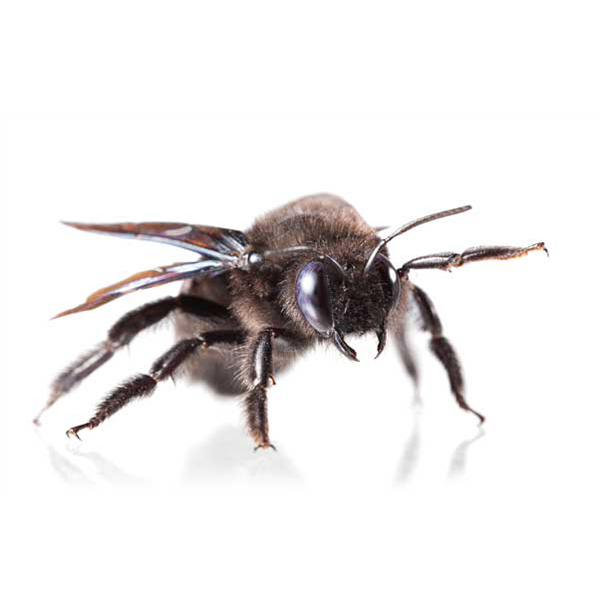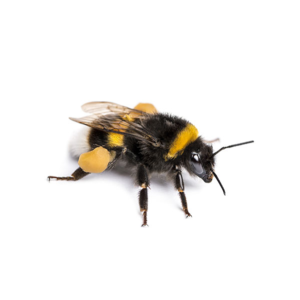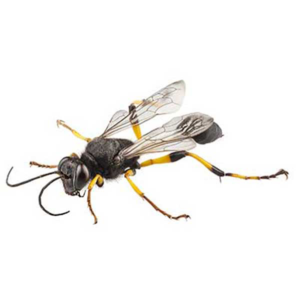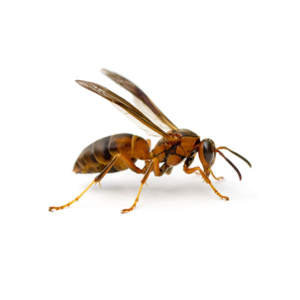Carpenter Bees in Manhattan, Kansas City Metro, and surrounding areas
Carpenter bees get their name from their habit of boring into wood, creating chambers to raise their young. Along with bumblebee queens, carpenter bees are the largest native bees in the United States. Carpenter bees can be found across the southern United States, including right here in Manhattan, Kansas City Metro, and surrounding areas. Carpenter bees do not eat wood but cause damage to structures by excavating tunnels in wood, particularly in lumber that is dry and weathered.
Carpenter Bee Habitat
Carpenter bees are not social insects and create individual nests in trees, eaves, or sides of structures. Males and females overwinter in old nest tunnels and emerge in the spring to mate. The mated female selects a suitable piece of wood for nest construction while the male spends most of their time hovering near nest sites. The female excavates a gallery using her mandibles, furnishes her nest with “bee bread” (a mixture of pollen and regurgitated nectar), deposits an egg, and closes the cell with chewed wood pulp. A carpenter bee infestation is usually detected by observing a large amount of sawdust and pollen on the ground below the area being chewed and excavated.
Carpenter Bee Behaviors, Threats, or Dangers
Female carpenter bees are rarely aggressive but will sting if provoked. If a person is stung by a carpenter bee and is allergic to bee venom, they should seek immediate medical attention. Male carpenter bees do not possess a stinger, but can be extremely defensive when protecting and defending their nest. Although carpenter bees can be helpful pollinators, they can cause significant damage to structures. Windowsills, wooden siding, decks, railings, outdoor furniture, and fences can be attacked. While the damage to wood from the excavation of individual carpenter bees may be slight, the activities of numerous bees over many years can result in considerable destruction. If you suspect a carpenter bee infestation, it is recommended to contact a bee control professional.





